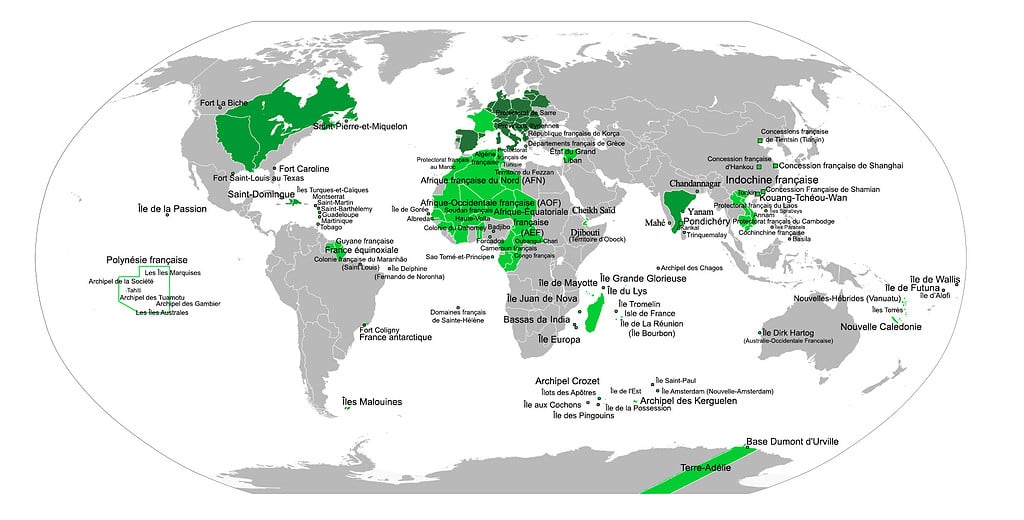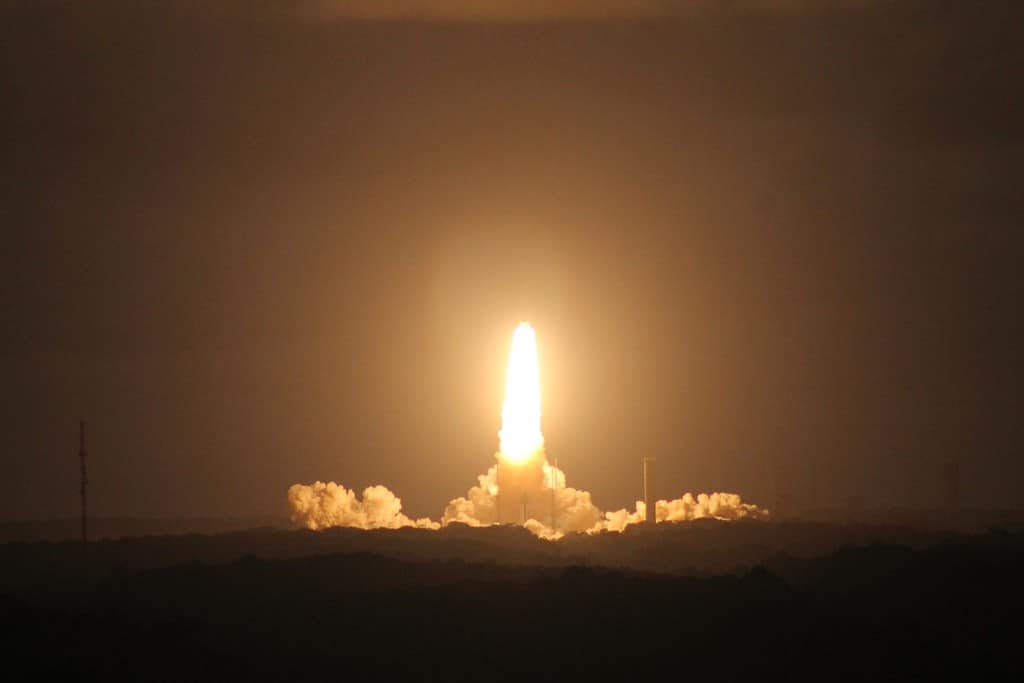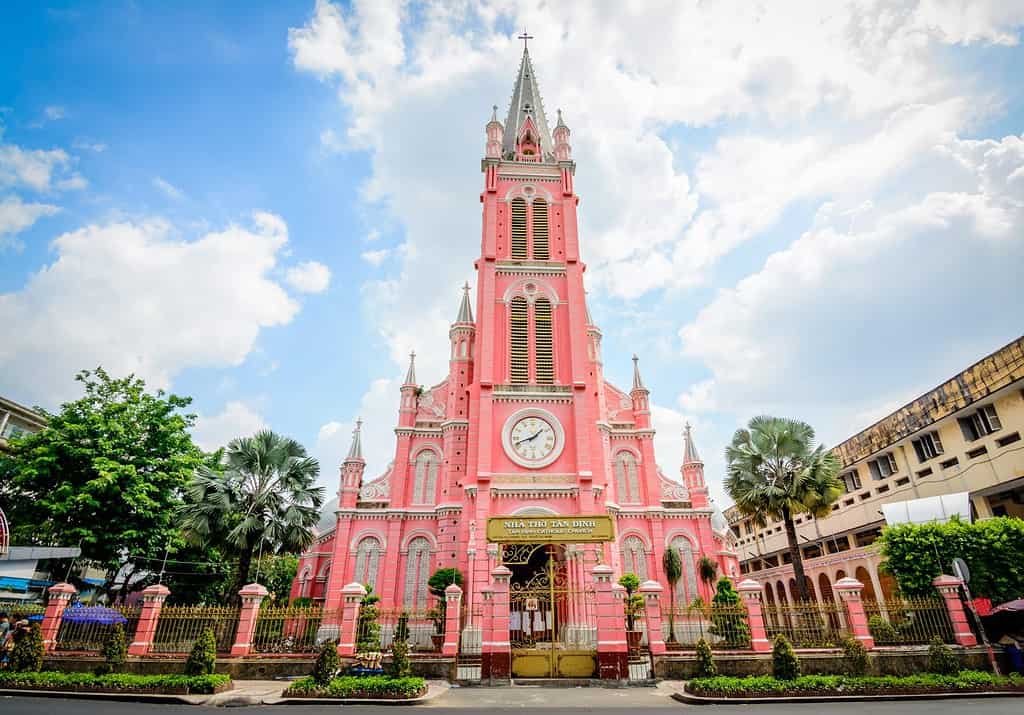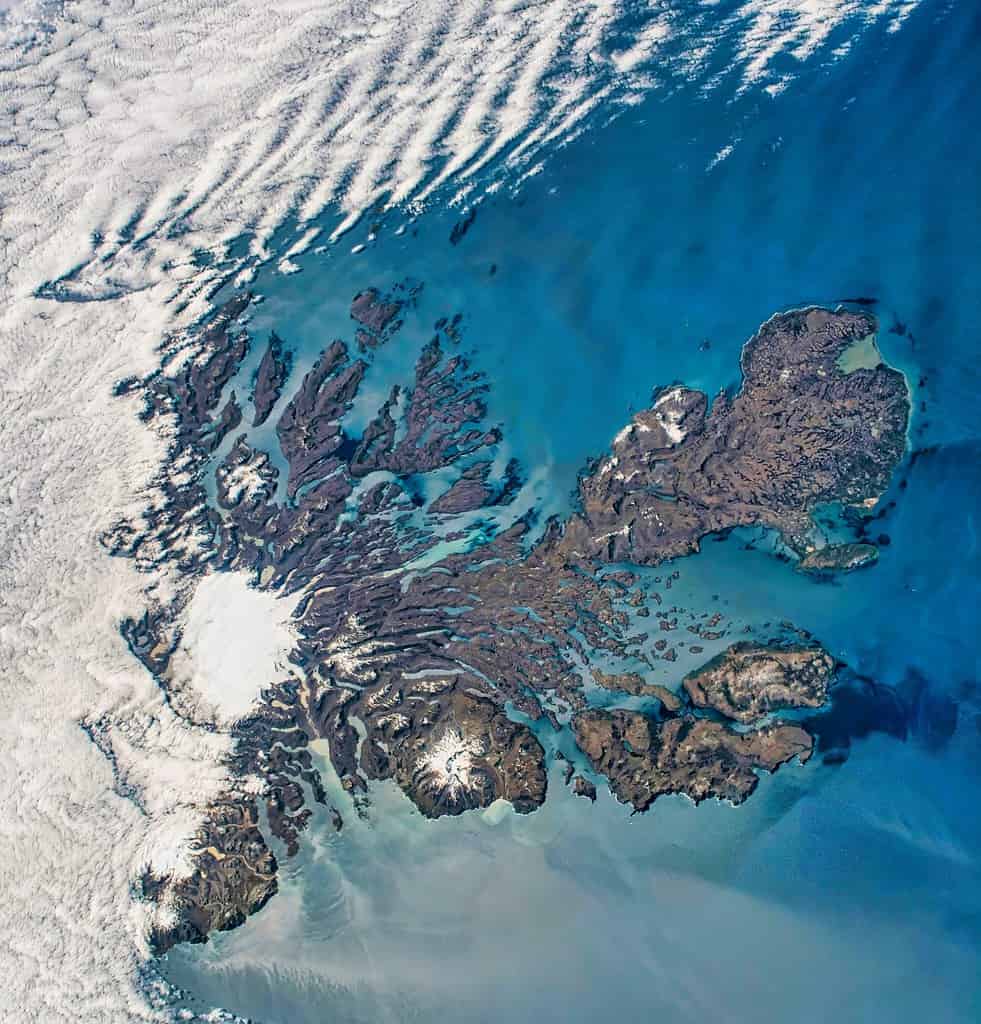France was one of the most successful colonial powers in history. French cultural influence is profound in today’s world, with 29 countries speaking French as their primary language and some 400 million people speaking it with various degrees of fluency. France’s influence continues to be so strong, that some say much of its empire never really ended. Diplomatic, financial, and military pressure are some of the levers France uses to exercise a degree of neocolonial domination in some of its former dependencies, particularly in northwest Africa. We’ve assembled a comprehensive list of former French dominions. Maybe consider it your vacation bucket list!
The French Empire at Its Peak

At one time or another France ruled all the labeled territories but not all at the same time.
©Gd21091993, Public domain, via Wikimedia Commons - License
France was one of the earliest European powers to start building an overseas colonial empire. Starting in the 16th century, France claimed territories on every continent. In fact, at one time or another, 80% of the world’s modern countries were invaded by France! Had it been able to retain all its colonies at the same time, as pictured in the map above, France would have ruled 9.3 million sq mi (24 million sq km). This would have made it the second largest empire in world history, after the British Empire.
French influence continues in its former possessions in language, architecture, cuisine, governmental and educational institutions, and many other aspects of life. In some cases, former colonies are quite proud of their French connection; others would prefer to say aurevoir to the legacy of colonialism. Below we’ve listed all the modern countries and territories that France once controlled in whole or in part. So, grab your passport and brush up on your French!
North America

Persisting French cultural influence is everywhere in the Canadian province of Quebec.
©Songquan Deng/iStock via Getty Images
France’s colonies in North America included:
- Canada – Quebec and the Maritime Provinces of Canada were French territories conquered by the British. Quebec continues to guard its language and heritage in multicultural Canada.
- Saint Pierre and Miquelon – This archipelago of eight islands off the coast of Newfoundland is still French territory. It gives them access to rich fishing grounds in the area.
- United States – The region from the Appalachian Mountains to the Rocky Mountains was all French until Britain took everything east of the Mississippi during the French and Indian War. Napoleon sold the enormous Louisiana Territory to the United States in 1803.
The Caribbean

Haitians speak Creole, a language that originated in French.
©SALMONNEGRO-STOCK/Shutterstock.com
France and other European powers were eager to lay claim to the Caribbean islands. Their tropical climate was perfect for raising sugarcane and the manufacture of rum, molasses, and other products that could be sold for great profit in Europe. Controlling them could be difficult, though, as rival powers seized them, or they revolted against colonial control.
Haiti was the first country in the New World to win its independence after the United States. France could not reverse Haiti’s violent revolution but was able to impose reparations payments on it for 122 years for the loss of French lives and property. Creole, a mixture of French, African, and indigenous languages, is what Haitians speak today. Vodun, a syncretism of West African animism and French Catholicism, is Haiti’s unique religious contribution to world culture.
Here’s a list of the islands in the region that France owned at one time or another:
- Antigua and Barbuda
- Clipperton Island
- Collectivity of Saint Martin
- Dominica
- Dominican Republic
- Grenada
- Guadeloupe
- Haiti
- Îles des Saintes
- La Désirade
- Marie-Galante
- Martinique
- Montserrat
- Saint Barthélemy
- Saint Kitts and Nevis
- Saint Lucia
- Saint Vincent and the Grenadines
- Trinidad and Tobago
South America

This Ariane 5 rocket launches from French Guiana, the site of France’s space program.
©Laura Voyage/Shutterstock.com
France had difficulty laying claim to South American territory because the Spanish and Portuguese got there first and were vigilant to keep other countries out. These are the few territories they were able to eke out:
- Brazil – France planted a couple of short-lived colonies in what is today Brazil but was not able to retain control of them long-term.
- Falkland Islands – France was the first to plant a colony in the Falkland Islands at the southern end of the continent, later losing it to Britain.
- French Guiana – Located on the north coast of the continent, French Guiana is no longer a colony but is fully integrated as a part of France. This means that France’s longest land border today is with Brazil.
Europe

Malta was a strategic French colony in the central Mediterranean.
©a_lis/iStock via Getty Images
The French Revolution culminated in the dictatorship of Napoleon Bonaparte. From 1799-1815 the Napoleonic Wars pitted France against most other countries of the continent. France’s conquests of Spain and Portugal fatally weakened their hold on their colonies, so most of Latin America achieved independence during that time. These are the modern European countries that were fully or partially occupied by Napoleonic France:
- Austria
- Belarus
- Belgium
- Croatia
- Germany
- Italy
- Latvia
- Liechtenstein
- Lithuania
- Luxembourg
- Malta
- Netherlands
- Poland
- Portugal
- Russia
- Slovenia
- Spain
- Switzerland
- Ukraine
Africa

In 2013, French soldiers intervened in Mali to help the government fight off insurgents.
©U.S. Air Force photo by Staff Sgt. Nathanael Callon, Public domain, via Wikimedia Commons - License
Most of France’s colonial empire was located in Africa. They lost most of these territories during and after World War II. Northwest Africa in particular, located geographically close to France, has been an area where the French have been keen to maintain their influence. The French language, regional currencies linked to the French franc and later the Euro, and military interventions are all facets of what many people say is a covert “neocolonial” policy.
- Algeria
- Burkina Faso
- Benin
- Central African Republic
- Chad
- Chagos Archipelago
- Comoros
- Djibouti
- French Cameroon
- Gabon
- Gambia
- Guinea
- Ivory Coast
- Madagascar
- Mauritania
- Mauritius
- Mali
- Mayotte
- Morocco
- Niger
- Nigeria
- Réunion
- São Tomé and Príncipe
- Scattered Islands
- Senegal
- Seychelles
- Togo
- Tunisia
Asia

Tan Dinh Church in Saigon is a visible relic of French Roman Catholic influence in Vietnam.
©nitsawan katerattanakul/Shutterstock.com
France had small colonies in China, India, and Thailand, but the largest and most lasting of its colonies was French Indochina, consisting of the modern countries of Laos, Cambodia, and Vietnam. After World War I, France acquired Syria and Lebanon as a temporary League of Nations mandate from the defeated Ottoman Empire. Here are the former French colonies in Asia:
- Cambodia
- China
- India
- Laos
- Lebanon
- Paracel Islands
- Spratly Islands
- Syria
- Thailand
- Vietnam
Pacific Islands

Exclusive overwater bungalows for tourists in Mo’orea, French Polynesia.
©Jon Ruiz Ortiz/Shutterstock.com
France continues to retain many island colonies in the Pacific. Dirk Hartog Island is now in the possession of Australia and Vanuatu is an independent country. The remaining colonies below are still French possessions. In addition to being a beautiful vacation destination, French Polynesia played an important role in the projection of French power in the Cold War, as it was a site for French nuclear weapons testing.
- Dirk Hartog Island
- French Polynesia
- New Caledonia
- Vanuatu
- Wallis and Futuna
Antarctica

The Kerguelen Islands as seen from orbit.
©BEST-BACKGROUNDS/Shutterstock.com
France continues to control several small island groups in and near the Antarctic Ocean. In addition to being of interest for scientific research, ownership of them allows France to lay claim to any natural resources in the surrounding ocean and seabed.
Several countries, including France, have claimed wedges of Antarctica stretching like frozen pizza slices from the South Pole out to the coast. France’s claim is called Adélie Land. This claim is not internationally recognized. If the ice caps continue to retreat, such claims could give France and other countries access to new sources of raw materials.
- Crozet Islands
- Kerguelen Islands
- Île Amsterdam
- Île Saint-Paul
- Adélie Land
Areas Where France Is Still A Leader

France is synonymous with high culture and the good life.
©Tatevosian Yana/Shutterstock.com
Despite its greatly diminished empire, France is still considered a world leader in many domains. It is:
- A permanent member of the UN Security Council.
- A nuclear-armed country ranked #4 in the number of weapons it holds.
- The 11th-strongest military power in the world.
- The world’s leading tourist destination with 89 million visitors a year.
- The 7th largest economy in the world. Its gross domestic product is $3.18 trillion.
- An influential member of the world’s most powerful organizations: the European Union, NATO, the Group of Seven, and the Organization for Economic Co-operation and Development.
- A world leader in art, architecture, cinema, fashion, cuisine, music, literature, philosophy, and sport.
- A powerhouse of science and technology, ranked 6th in the world in the number of scientific papers originating from their laboratories.
So empire or no empire, France pretty much still rules!
The photo featured at the top of this post is © iStock.com/Olivier DJIANN
Thank you for reading! Have some feedback for us? Contact the AZ Animals editorial team.






